10 Hidden Islands With Amazing Snorkeling—And 5 That Don’t Live Up To The Hype
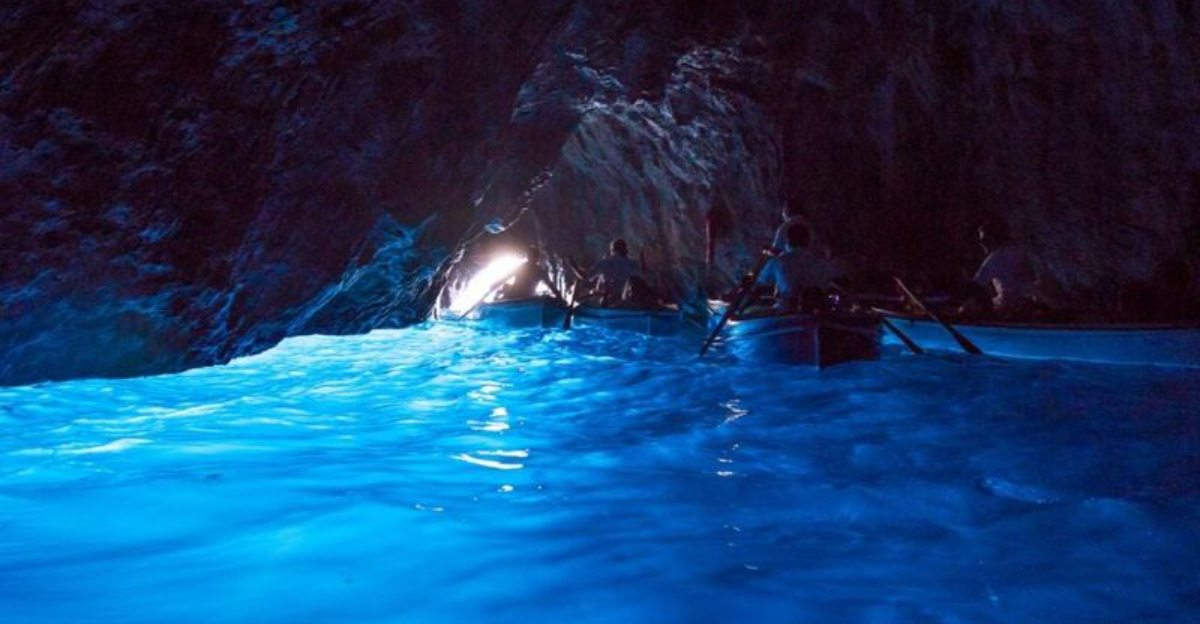
Snorkeling is one of those simple pleasures that can turn a beach trip into an unforgettable adventure. Just a mask, fins, and a bit of curiosity—and suddenly, you’re gliding above a whole new world. But here’s the catch: not all snorkeling spots are created equal.
Some islands boast thriving reefs, calm waters, and marine life so dazzling it feels like swimming in a tropical aquarium. Others? Overcrowded, cloudy, and surprisingly lifeless beneath the surface. I’ve learned (sometimes the hard way) that doing a bit of research can be the difference between magic and meh.
So where should you go for those postcard-worthy snorkeling experiences—and which places might leave you underwhelmed and out of breath for the wrong reasons? Let’s dive in and find out. Have you ever been blown away by a snorkeling spot… or totally let down?
1. Culebra, Puerto Rico: A Caribbean Treasure Without the Crowds
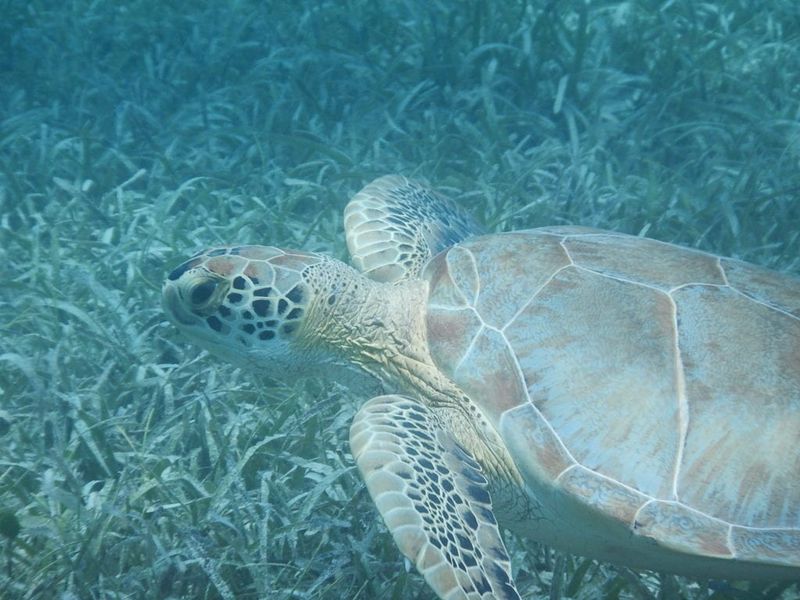
Just 17 miles east of Puerto Rico lies Culebra, home to Flamenco Beach with its diamond-clear waters perfect for underwater exploration.
Sea turtles glide through the gentle currents while rainbow-colored parrotfish nibble on coral formations. The island remains delightfully underdeveloped compared to its Caribbean neighbors. No cruise ships dock here, meaning the reefs stay healthy and the beaches uncrowded.
For the best experience, visit Tamarindo Beach or Carlos Rosario Beach where the reef starts just feet from shore. The protected Culebra National Wildlife Refuge ensures these waters stay pristine for generations of snorkelers to come.
2. Amed, Bali: Where Volcanic Black Sands Meet Vibrant Marine Life

Unlike Bali’s tourist-packed southern beaches, Amed offers a peaceful escape on the island’s eastern coast. Volcanic black sand beaches lead to some of Indonesia’s most accessible reef systems, with the famous Japanese shipwreck just offshore.
Morning snorkeling here rewards you with calm waters and visibility often exceeding 65 feet. The contrast between dark volcanic sand and colorful coral gardens creates an otherworldly underwater landscape unique to this region.
Local fishermen sometimes offer guided snorkeling trips to secret spots where you might spot blue-spotted stingrays or even the occasional reef shark. The relaxed vibe extends beyond the water with beachside cafes serving fresh catches daily.
3. Koh Lipe, Thailand: The Maldives of Southeast Asia
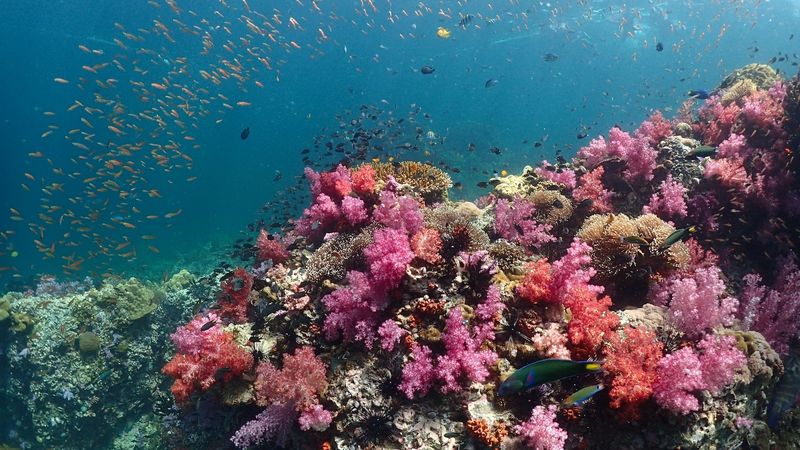
Though small enough to walk across in 30 minutes, Koh Lipe packs an underwater punch that rivals destinations twice its size.
The Adang-Rawi archipelago surrounds this tiny paradise, creating a protected marine environment teeming with over 25% of the world’s tropical fish species. Sunrise Beach offers gentle morning snorkeling right from shore. Soft corals wave in the current while anemonefish dart between their protective tentacles.
When the afternoon heat hits, head to the aptly named Sunset Beach where you can snorkel alongside graceful blacktip reef sharks in the shallows. The laid-back island vibe makes Koh Lipe feel like Thailand before mass tourism discovered its shores.
4. Gili Meno, Indonesia: The Quiet Island’s Underwater Sculpture Park
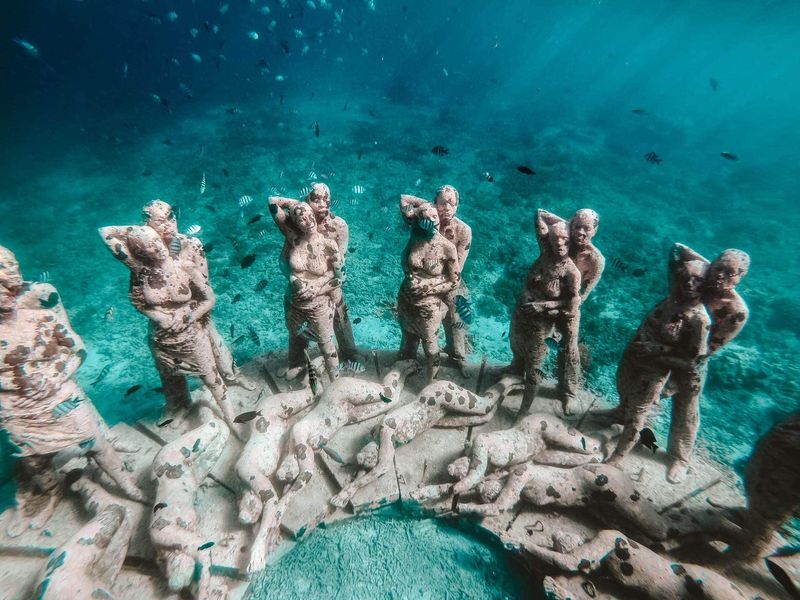
If you’re seeking tranquility both above and below water, Gili Meno delivers with its car-free pathways and uncrowded beaches. The smallest of the three Gili Islands boasts the clearest waters and healthiest coral systems in the region.
British sculptor Jason deCaires Taylor’s underwater installation ‘Nest’ features life-sized human figures standing in a circle, now becoming an artificial reef teeming with marine life. Snorkelers can float above this hauntingly beautiful art piece while sea turtles cruise by.
The island’s turtle sanctuary releases baby turtles regularly, contributing to the abundant turtle population in surrounding waters. Many visitors report swimming alongside five or more turtles during a single snorkeling session off Meno’s eastern shores.
5. Little Corn Island, Nicaragua: The Caribbean’s Best-Kept Secret
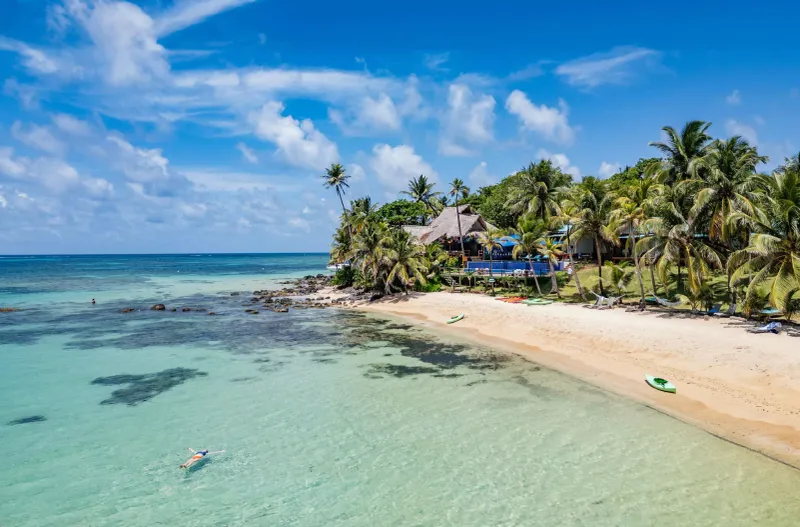
Hidden off Nicaragua’s eastern coast, Little Corn Island remains delightfully disconnected – no cars, no roads, just footpaths through jungle leading to pristine beaches. The surrounding waters hold healthy elkhorn coral formations rarely seen elsewhere in the Caribbean.
Snorkelers here swim through underwater canyons where spotted eagle rays soar overhead. The island’s remote location means these reefs see minimal human impact. After rain showers, head to the eastern side where freshwater meets saltwater, creating a unique ‘underwater river’ effect visible through your mask.
Local fishermen-turned-guides can show you secret spots where nurse sharks rest under ledges during the day, making for thrilling yet safe underwater encounters.
6. Siladen Island, Indonesia: Heart of the Coral Triangle
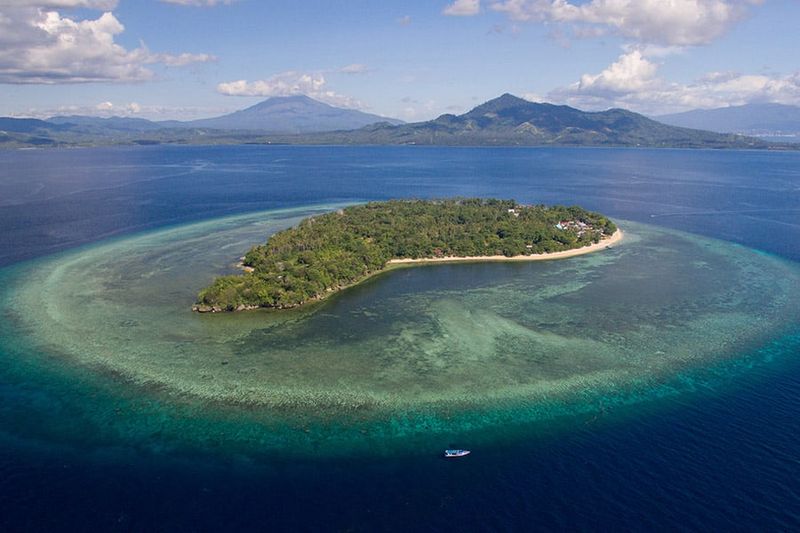
Measuring just one kilometer across, tiny Siladen sits within Bunaken Marine Park in the heart of the Coral Triangle – the world’s epicenter of marine biodiversity. Scientists have documented over 390 coral species in these waters, creating an underwater wonderland for snorkelers.
The drop-offs around Siladen feature shallow coral gardens perfect for snorkeling before plunging dramatically to depths favored by divers. Green sea turtles nest on the island’s beaches, making turtle encounters almost guaranteed. During seasonal plankton blooms, whale sharks sometimes visit these nutrient-rich waters.
Even without these gentle giants, you’ll see more fish species in one snorkel session here than you might in a week elsewhere. The island’s commitment to conservation means strict regulations protect these underwater treasures.
7. Eleuthera, Bahamas: The Island of Pink Sands and Blue Holes
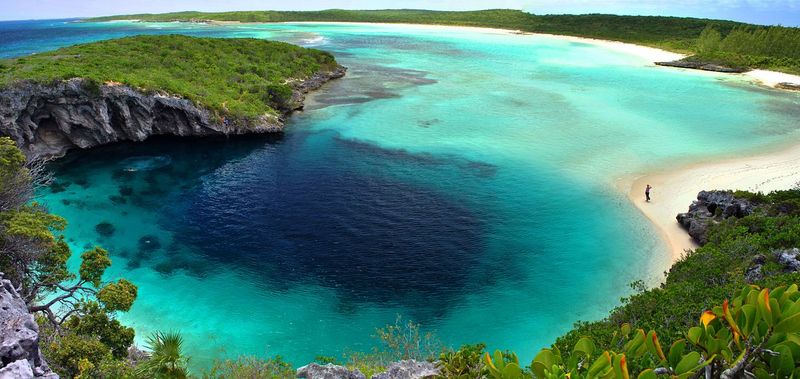
Stretching 110 miles long but rarely more than a mile wide, Eleuthera offers snorkelers a variety of underwater landscapes without the crowds of Nassau. The famous Current Cut provides a natural lazy river experience as gentle currents carry snorkelers over vibrant coral formations.
The island’s blue holes open windows to underground cave systems where saltwater and freshwater create stunning visual effects. Sunlight beams penetrate these circular pools, illuminating schools of silvery tarpon that swirl in the depths.
Don’t miss Devil’s Backbone, a shallow reef system where countless shipwrecks from colonial times have created artificial reefs now home to octopuses and moray eels. Between snorkeling sessions, relax on the island’s unique pink sand beaches – their color comes from crushed red foraminifera shells.
8. Mafia Island, Tanzania: Where Whale Sharks Meet Pristine Reefs
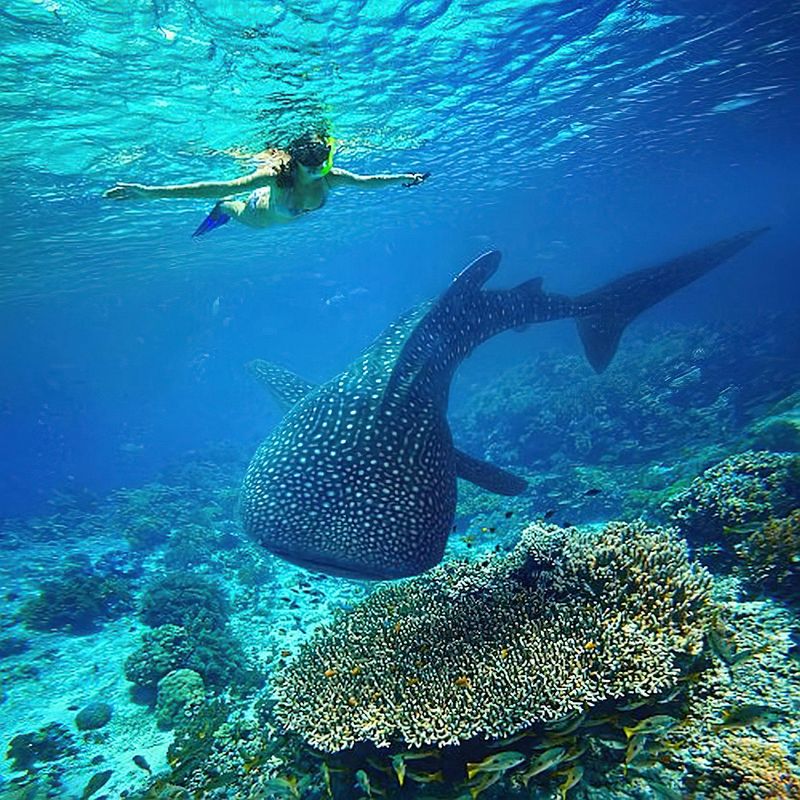
While Zanzibar gets all the attention, savvy snorkelers head to Mafia Island for Tanzania’s most untouched marine ecosystem. The island’s protected marine park covers over 800 square kilometers where fishing restrictions have allowed marine life to flourish beyond imagination.
Between October and March, massive whale sharks frequent these waters, allowing snorkelers the rare opportunity to swim alongside the ocean’s largest fish. Even without these gentle giants, the calm waters reveal coral gardens where over 400 fish species dart among soft and hard corals.
Many sections of reef remain so pristine they’re used as baseline examples of healthy East African marine ecosystems by researchers. The island’s limited development means beaches remain empty and waters clear of pollution year-round.
9. Apo Island, Philippines: Community-Led Conservation Success Story

Once suffering from destructive fishing practices, Apo Island transformed into a conservation success story when locals established one of the Philippines’ first marine sanctuaries. Today, snorkelers reap the benefits of this community-led initiative with some of the highest coral cover percentages in the region.
Sea turtles have become so accustomed to respectful human interaction that they continue feeding while snorkelers observe from a responsible distance. The island’s small size means excellent snorkeling spots are accessible from any beach.
Morning snorkeling sessions often reveal bumphead parrotfish – massive reef fish that can grow to 4 feet long – cruising in schools near the shore. The island’s simple accommodations and limited electricity add to the feeling of discovering a place tourism hasn’t yet changed.
10. Holbox Island, Mexico: Where Whale Sharks Gather in Summer
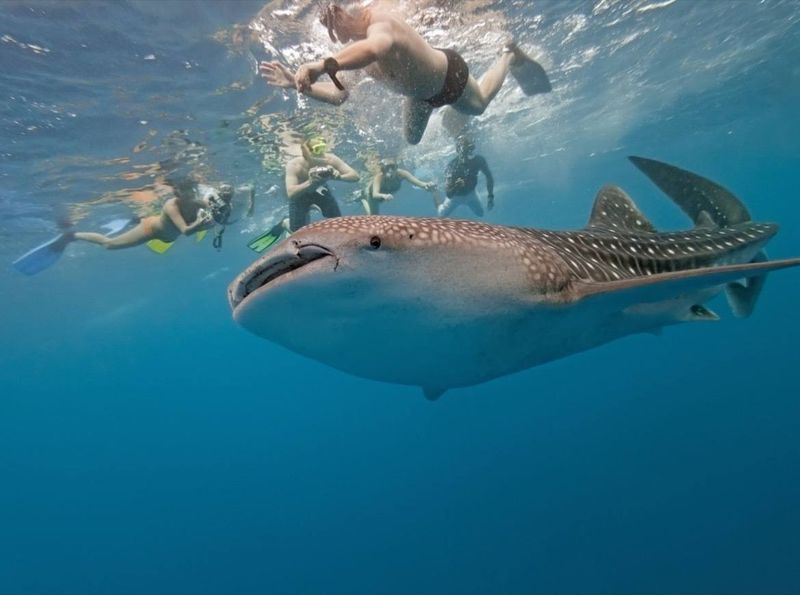
Located where the Gulf of Mexico meets the Caribbean Sea, Holbox (pronounced ‘hole-bosh’) offers a laid-back alternative to Cancun’s bustling beaches just two hours north. This car-free island features shallow, calm waters perfect for beginner snorkelers.
During summer months, the world’s largest aggregation of whale sharks feeds in the nutrient-rich waters offshore. Local regulations ensure sustainable encounters with these gentle plankton-eaters. Beyond whale shark season, the island’s western side features mangrove channels where snorkelers can observe juvenile fish in their natural nursery.
Bioluminescent plankton sometimes illuminate nighttime waters, creating a magical underwater light show. The island’s commitment to eco-tourism has prevented the overdevelopment seen elsewhere on Mexico’s Caribbean coast.
11. Santorini, Greece: Beautiful Above Water, Disappointing Below
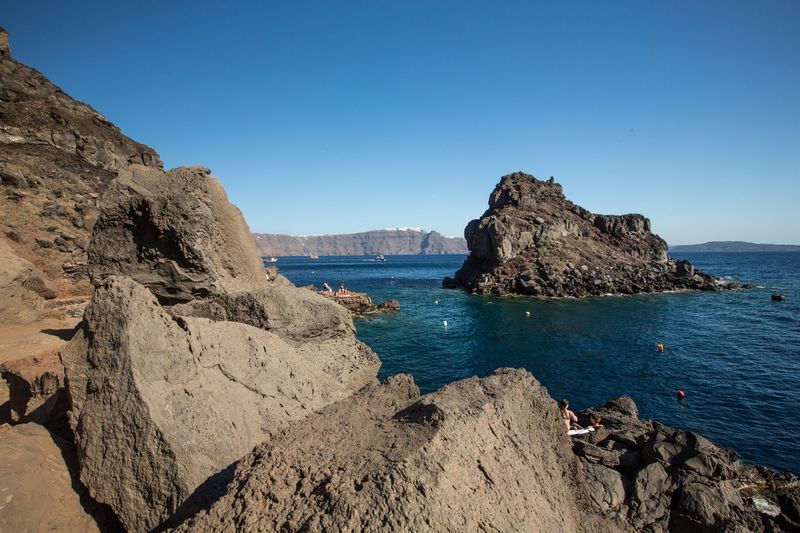
Those iconic blue-domed churches and whitewashed buildings perched on volcanic cliffs make Santorini a photographer’s dream. Unfortunately, the underwater scenery doesn’t match the island’s famous views.
Volcanic activity created the island but also left underwater landscapes dominated by dark rocks and black sand with minimal coral growth. Marine life remains sparse compared to tropical destinations, with few fish species adapted to these conditions. The popular Red Beach and White Beach offer striking geological formations above water but little marine biodiversity for snorkelers.
Water clarity often disappoints due to volcanic sediment, especially after windy days. While Santorini deserves its reputation for stunning sunsets and architecture, serious snorkelers should look elsewhere in the Mediterranean.
12. Bora Bora: Overpriced Snorkeling in a Damaged Ecosystem
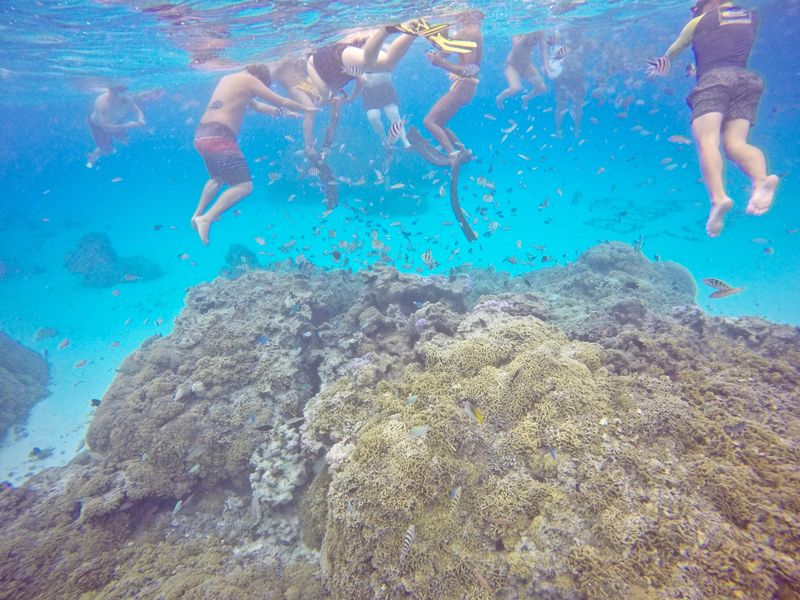
Those stunning overwater bungalows come with a hefty environmental price tag on Bora Bora. Decades of intensive tourism development have damaged once-pristine reefs around the main island.
Hotel-organized snorkeling tours often take guests to overcrowded ‘shark and ray feeding’ sites where natural behaviors have been disrupted by daily feedings. The famous lagoon still offers turquoise waters, but coral health has declined significantly in accessible areas.
While some healthier patches remain in the outer motus (small islands), they’re often reserved for guests staying at $1000+ per night resorts. The disconnect between Bora Bora’s reputation and reality leaves many snorkelers disappointed, especially given the premium prices charged for basic snorkeling excursions.
13. Cozumel, Mexico: A Victim of Its Own Popularity

Cruise ships deliver thousands of visitors daily to this island off Mexico’s Yucatan Peninsula, creating an underwater traffic jam at popular snorkeling sites. The once-healthy Palancar Reef now shows significant damage from decades of anchors, sunscreen chemicals, and accidental fin kicks.
Beach clubs sell day passes that include snorkeling equipment but often direct inexperienced snorkelers to degraded reef areas unable to recover from constant human contact. Healthy coral increasingly exists only in deeper areas accessible to scuba divers rather than snorkelers.
During cruise ship days, visibility decreases dramatically as sediment gets kicked up by hundreds of fins. Though marine park fees are collected, enforcement of protective regulations remains inconsistent. For better snorkeling, consider less-visited spots on the mainland’s Riviera Maya instead.
14. Capri, Italy: Beautiful Island, Mediocre Snorkeling
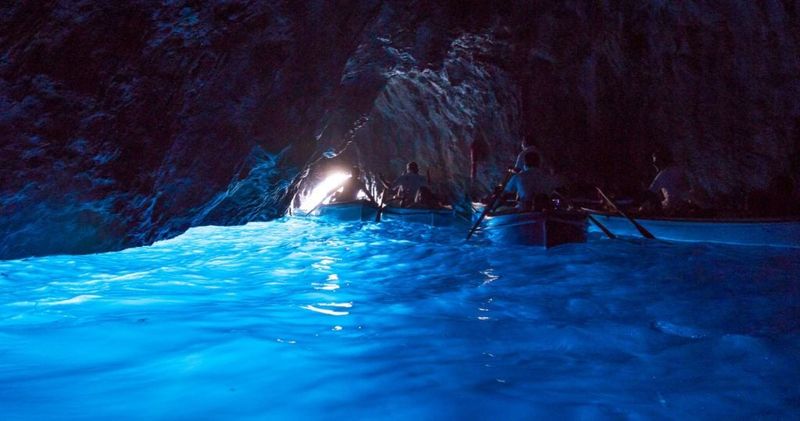
The Blue Grotto draws visitors to Capri for its famous azure illumination, but snorkeling here rarely matches expectations. The Mediterranean’s limited coral growth means underwater landscapes feature mostly rocks and seagrass rather than colorful reefs.
Tourist boats crowd the island’s famous grottos during summer months, creating noise and pollution that drives away marine life. Water temperatures remain chilly even in summer, requiring wetsuits for comfortable snorkeling. While you might spot some Mediterranean fish species like salema and damselfish, their numbers and variety pale compared to tropical destinations.
Capri’s charm lies in its scenic landscapes, upscale shopping, and delicious cuisine – not its underwater offerings. Visit for the island’s beauty and culture, but set realistic expectations for snorkeling adventures.
15. Nassau, Bahamas: Cruise Ship Central with Artificial Experiences
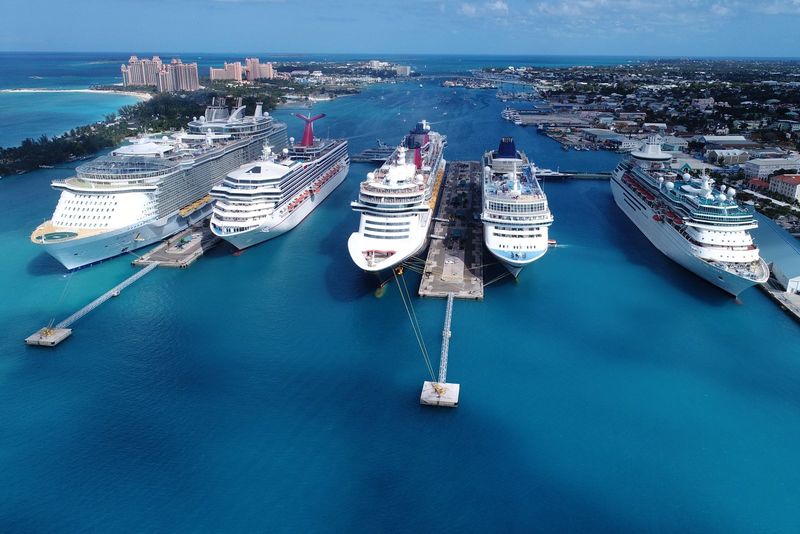
As the Caribbean’s busiest cruise port, Nassau’s nearby reefs suffer from decades of heavy tourism impact. Many snorkeling tours take visitors to artificial underwater attractions like the ‘Sea Garden’ sculptures rather than healthy natural reefs.
The famous Atlantis resort offers snorkeling with captive marine life in controlled environments – a far cry from authentic ocean experiences. When natural sites are visited, they’re often overwhelmed with dozens of snorkelers at once. Water clarity near the main harbor suffers from cruise ship traffic, with up to six massive vessels docked daily.
While the Bahamas offers spectacular snorkeling in its outer islands, Nassau itself represents commercialized underwater tourism at its most disappointing. Savvy travelers use Nassau as a jumping-off point to reach more pristine islands in the Bahamian archipelago.
